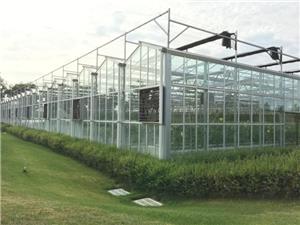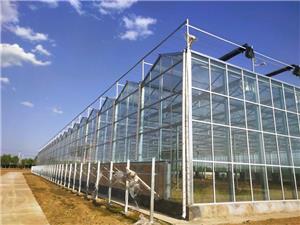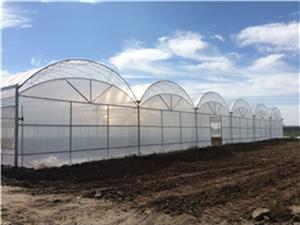greenhouse ventilation
Misconception 1: Low Temperature and Lack of Ventilation
When encountering consecutive overcast days or sustained low temperatures outdoors, many growers opt to block external air to retain heat within the greenhouse.
In an unventilated greenhouse, crops are deprived of carbon greenhouse film dioxide essential for photosynthesis, akin to insufficient nourishment during their growth phase. This not only impedes the growth rate of crops but also compromises the quality of greenhouse film the produce.
Prolonged lack of ventilation prevents the removal of water evaporated from the soil and foliage into the airspace, thereby increasing the likelihood of crop greenhouse film disease outbreaks. This escalates management and pharmaceutical costs, posing a threat to product safety and quality.
Solution:
For greenhouses equipped with heating systems, it is advisable to elevate the internal temperature before and after ventilation. When the temperature remains within the optimal range for crop photosynthesis, daily ventilation for over an hour is recommended. For cold greenhouses without heating facilities, ventilation should be conducted around greenhouse film midday when temperatures are most favorable, maintaining a minimum of 10 degrees Celsius for approximately half an hour.

Misconception 2: Ground Film Adhesion
The use of ground film in greenhouse production has become widespread, recognized for its weed suppression, soil temperature enhancement, greenhouse film moisture retention, and reduction of greenhouse air humidity. However, greenhouse film a common misconception is the direct adhesion of the film to the ground. This practice compromises soil aeration and prevents soil structure loosening through intercropping due to the film's presence.
Solution:
Soil, being the root system's growth environment, directly influences root functionality and, consequently, crop development. Without compromising the film's coverage functions, more practical methods can be employed, such as the following two:
● Ridge Trenching: Primarily applicable to the one-ridge-two-row cultivation model. Post-ridge formation, a trench approximately 10 cm deep is created greenhouse film in the center. Seedlings are planted on the higher sides of the trench, and when covered with film, the central ridge remains hollow, facilitating more effective ventilation and significantly faster air exchange compared to direct film adhesion on the ridge surface.
● Rope Suspension: Also targeting the one-trench-two-row model. A flat trench is prepared, and a nylon rope about 10 cm high is stretched across the trench's midpoint. To prevent the rope from sagging, support points are established along the trench. The greenhouse film is then suspended over the rope, creating a larger space between the film and the trench surface, thereby achieving more efficient ventilation.

Selection of Ventilation Methods Based on Greenhouse greenhouse filmConditions, Labor Availability, and Crop Growth Requirements
Top Ventilation
Ventilation through greenhouse roof vents is particularly suitable for off-season production in winter and early spring or delayed planting in autumn. The primary concern during winter ventilation is the direct and rapid impact of cold external air greenhouse film on seedlings, potentially causing flash injury. Improper handling can result in leaves, shoots, or entire seedlings exhibiting symptoms akin to scalding within minutes. Such incidents indicate cell membrane rupture, cell fluid leakage, and complete loss of cellular function.
During top ventilation, warmer air within the greenhouse evaporates through the vents, while colder external air descends into the greenhouse. As the cold air diffuses through the greenhouse, it traverses a longer path, allowing the relatively warmer internal air to preheat it effectively. This ensures that the fresh air reaching the seedlings is at a temperature greenhouse film close to their ambient temperature, minimizing cold air damage.greenhouse film
Waist Ventilation
Waist ventilation is suitable for late spring cultivation or early autumn delayed cultivation. Ventilation can be initiated when temperatures stabilize between 8-10 degrees Celsius. This involves setting up vents at approximately one meter above the ground along the greenhouse's side, typically in the overlapping area of the upper and lower greenhouse films. During this period, with minimal temperature differences inside and outside the greenhouse and moderate wind speeds, external air poses no threat to seedlings. However, this method is generally unsuitable for off-season cultivation.
Bottom Ventilation
This involves directly rolling up the greenhouse film from near the ground for ventilation. Bottom ventilation is appropriate for crops in early summer and autumn, late spring and summer, and summer greenhouse cultivation. During these seasons, external temperatures are generally high, stabilizing above 12 degrees Celsius, ensuring that external airflows do greenhouse film not negatively impact crop growth due to low temperatures. The advantages of this ventilation method include rapid air exchange, substantial greenhouse air turnover, temperature reduction within the greenhouse, enhanced soil air circulation, and timely fulfillment of increased carbon dioxide demands under high temperatures and intense photosynthesis.




